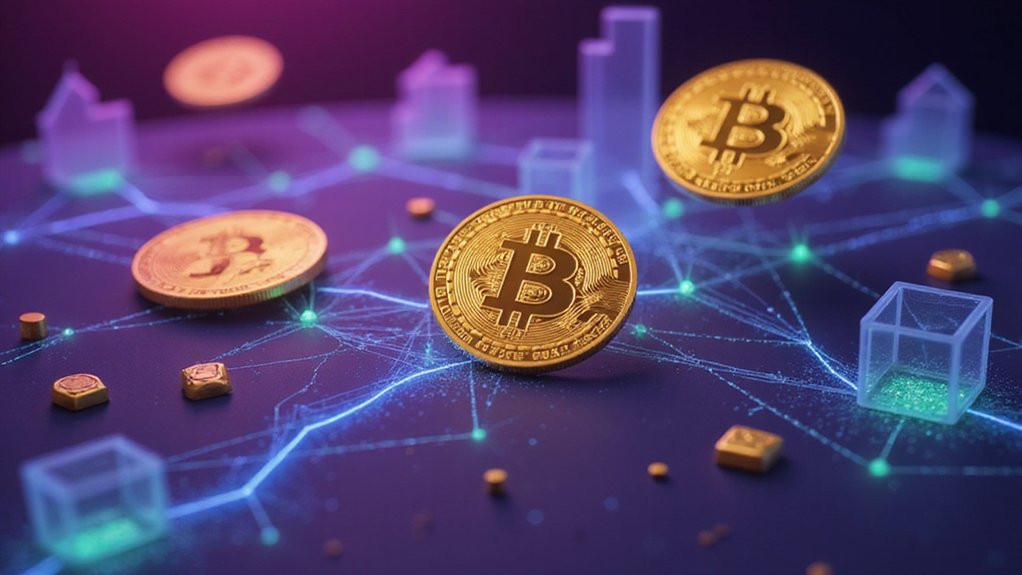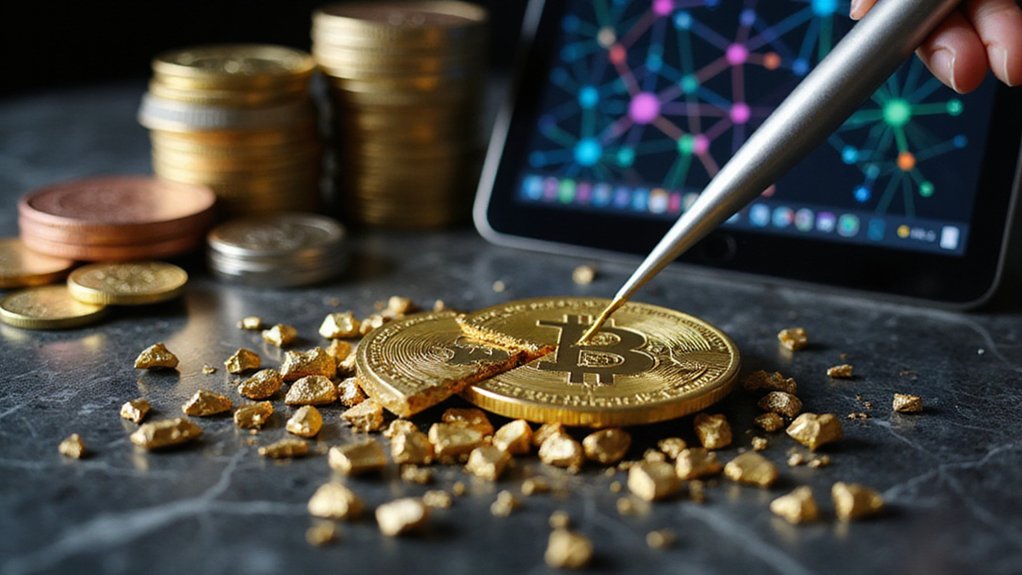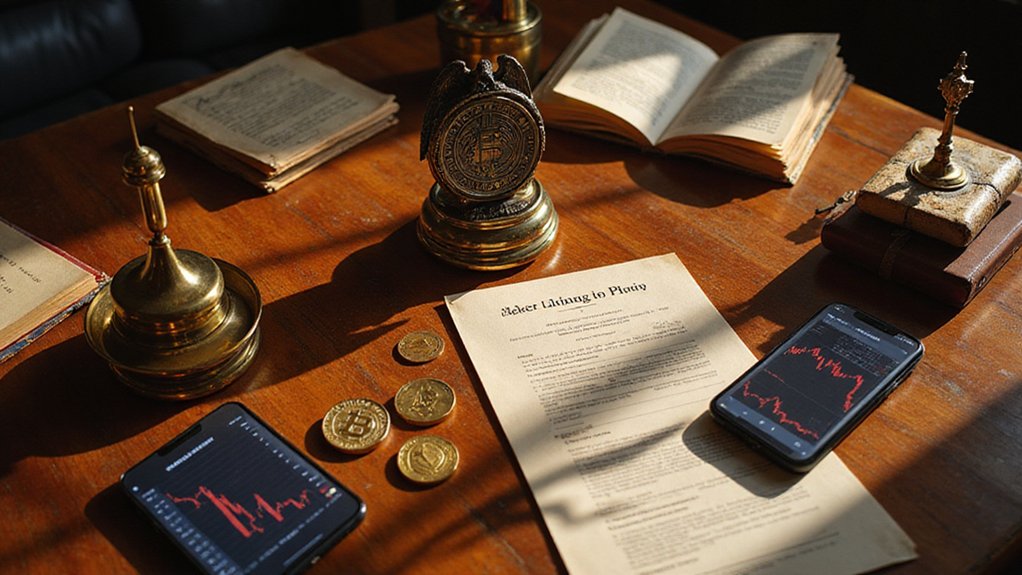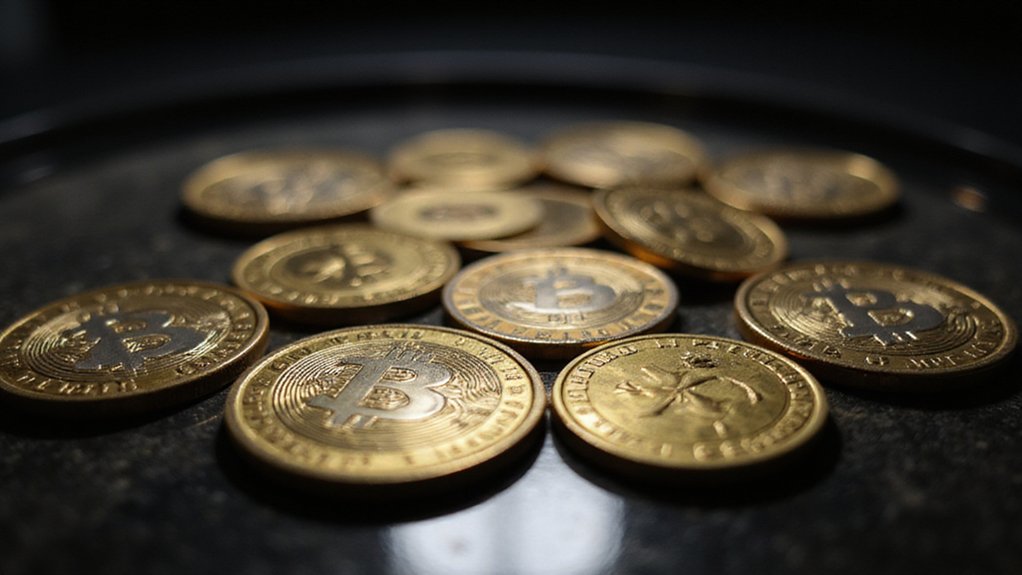Metaverse tokens are blockchain-based cryptocurrencies that serve as the economic backbone of virtual worlds, enabling users to purchase digital real estate, avatars, and accessories with actual financial value. These ERC-20 standard tokens—like Decentraland’s MANA and The Sandbox’s SAND—facilitate transactions, governance voting, and play-to-earn rewards within decentralized virtual environments. Operating on networks like Ethereum and Solana, they blur the peculiar line between gaming achievements and legitimate investment portfolios, creating economies where virtual land appreciates faster than traditional real estate markets and pixelated accessories command serious capital.

How does one purchase virtual real estate with digital currency that exists only in code yet commands real-world prices that would make Manhattan brokers weep? The answer lies in metaverse tokens—cryptocurrencies that function as the economic backbone of virtual worlds, enabling transactions that blur the increasingly thin line between digital fantasy and financial reality.
These blockchain-based digital currencies operate within decentralized networks, serving as both medium of exchange and store of value for virtual economies.
Metaverse tokens facilitate in-game transactions (purchasing avatars, virtual land, or digital accessories), marketplace trading, and reward distribution to users who participate in platform activities.
Metaverse tokens transform digital participation into economic activity, monetizing virtual interactions that somehow generate measurably real financial value.
The Sandbox’s SAND token and Decentraland’s MANA exemplify this functionality, allowing users to acquire virtual parcels that somehow appreciate faster than most traditional real estate markets.
Built primarily on Ethereum’s ERC-20 standard—though Solana and Polygon have emerged as alternatives—these tokens leverage smart contracts to execute automated, self-executing agreements without intermediaries. These token standards provide essential protocols that govern the behavior and interoperability of digital tokens across different blockchain networks and decentralized applications.
The underlying blockchain technology guarantees transaction transparency through public ledgers while maintaining security via decentralized consensus mechanisms.
Users enjoy permissionless participation, requiring no institutional approval to engage in transactions that might involve purchasing digital clothing for avatars that exist solely as pixels. As these platforms gain traction, users can stay informed about platform developments and token updates through newsletter subscriptions that deliver important announcements directly to their inbox.
Beyond mere transactional utility, many metaverse tokens grant governance rights, enabling holders to vote on platform development decisions—a peculiar form of democracy where one’s influence correlates with their virtual currency holdings. These platforms often utilize DAOs and governance tokens to ensure user-driven changes occur through transparent voting processes rather than centralized corporate mandates.
Play-to-earn models have emerged, compensating users with tokens for gameplay achievements, effectively transforming leisure into labor.
The ecosystem integration extends to NFT marketplaces, where tokens facilitate digital ownership of unique assets.
Interoperability allows some tokens to traverse multiple platforms, while external exchange compatibility enables conversion to traditional cryptocurrencies or fiat currencies—providing an exit ramp from virtual economies to tangible financial systems.
As adoption grows and technological evolution continues, metaverse tokens represent a fascinating convergence of gaming, finance, and social interaction. Whether this represents the future of digital commerce or an elaborate exercise in collective valuation of intangible assets remains to be determined by market forces that seem increasingly comfortable with paradox.
Frequently Asked Questions
Can Metaverse Tokens Be Converted Back to Real Money?
Yes, metaverse tokens can indeed be converted back to real money through cryptocurrency exchanges like Binance and Coinbase—assuming, of course, that market demand hasn’t evaporated overnight.
The conversion process involves trading these digital assets for fiat currency, though investors should brace themselves for potential volatility, transaction fees, and tax implications.
Success depends largely on liquidity and market conditions, which can shift faster than virtual real estate values.
What Happens to My Tokens if the Metaverse Platform Shuts Down?
When metaverse platforms shut down, tokens typically become digital artifacts—technically existing on blockchain networks but stripped of practical utility.
While holders retain custody through their wallets, these assets generally experience catastrophic value collapse as their primary use cases (purchasing virtual land, accessing platform services) evaporate.
The tokens transform into speculative remnants, occasionally traded by optimistic collectors hoping for miraculous resurrections that rarely materialize in practice.
Are Metaverse Tokens Subject to Government Regulation and Taxation?
Yes, metaverse tokens face both regulatory oversight and taxation, though the landscape remains frustratingly fragmented.
Most jurisdictions classify them as digital assets subject to capital gains tax upon sale, while income-generating activities trigger ordinary tax rates.
Regulatory bodies like the SEC scrutinize token classifications, determining whether securities laws apply.
Cross-border transactions complicate matters further, creating jurisdictional conflicts that would make Kafka proud—assuming he traded virtual real estate.
How Do I Store and Secure My Metaverse Tokens Safely?
Metaverse token storage requires a methodical approach—hardware wallets provide superior offline security, while software wallets like MetaMask offer convenient accessibility despite persistent connectivity vulnerabilities.
Multi-signature wallets add transactional safeguards, though cold storage remains paramount for substantial holdings.
Beyond storage mechanics, investors must implement rigorous security protocols: two-factor authentication, regular transaction monitoring, and periodic security audits.
The regulatory compliance discussed previously becomes particularly relevant when considering storage solutions across jurisdictions.
Can I Use the Same Tokens Across Different Metaverse Platforms?
Cross-platform token compatibility depends entirely on interoperability standards—blockchain-based assets (particularly NFTs) can theoretically traverse different metaverse environments, though implementation remains frustratingly inconsistent.
While tokenization promises seamless asset portability, each platform’s proprietary architecture often creates walled gardens that would make medieval guilds proud.
Successful cross-platform usage requires standardized protocols and API integration, which—despite grandiose marketing claims—many platforms haven’t fully embraced, leaving users’ digital assets somewhat stranded.









